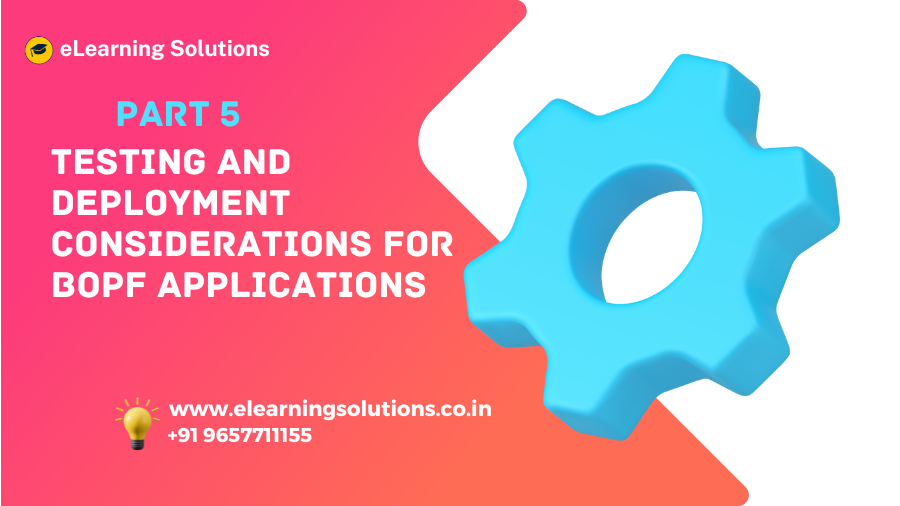In the dynamic world of SAP development, ensuring robust and secure applications is paramount. This is especially true for Business Object Processing Framework (BOPF) applications, which handle core business functionalities. Here, we delve into the crucial aspects of testing and deployment considerations for BOPF applications:
Testing Strategies for BOPF Applications: Testing and deployment considerations for BOPF applications
1. Unit Testing:
- Focus: Test individual BOPF objects and their methods in isolation.
- Techniques:
- Utilize a mocking framework like BUnit to simulate data access and modification interfaces (IF_FRW_READ and IF_FRW_MODIFY).
- Develop unit tests to verify the logic of actions, determinations, and validations within each object.
- Ensure proper handling of error conditions and edge cases.
2. Integration Testing:
- Focus: Test how BOPF applications interact with other system components and external services.
- Techniques:
- Utilize integration testing tools like SAP Solution Manager or third-party frameworks.
- Create test scenarios that simulate real-world interactions with other systems and data sources.
- Verify data exchange accuracy and overall system behavior.
Security Considerations and Access Control: Testing and deployment considerations for BOPF applications
- Authorization Checks: Implement authorization checks within BOPF actions to ensure users only perform allowed actions based on their roles and permissions.
- Data Security: Utilize SAP’s security framework to protect sensitive data accessed and modified by BOPF applications.
- Regular Audits: Conduct regular security audits to identify and address potential vulnerabilities.
Deployment Best Practices:
- Development Landscape: Deploy the BOPF application to a dedicated development landscape for thorough testing before moving to higher environments.
- Transport Management System (TMS): Utilize SAP’s TMS for controlled deployment across different landscapes (development, testing, production).
- Change Management Process: Follow established change management processes to document and track deployments, minimizing disruption to production systems.
Deployment Considerations for Different Landscapes:
- Development Landscape: Frequent deployments are expected for ongoing development and testing.
- Testing Landscape: Implement a testing strategy that mirrors production as closely as possible to ensure real-world behavior.
- Quality Assurance (QA) Landscape: Utilize dedicated QA environments for final testing and validation before moving to production.
- Production Landscape: Minimize deployments to production to maintain system stability and minimize downtime. Utilize rigorous change control procedures to ensure only approved and tested changes are deployed.
Conclusion:
Effective testing and deployment strategies are crucial for ensuring the quality, security, and reliability of BOPF applications. By implementing the strategies outlined above, developers can create robust and secure applications that meet the needs of their businesses.
Additional Resources:
- SAP Business Object Processing Framework (BOPF) Documentation: https://help.sap.com/doc/saphelp_nw751abap/7.51.0/en-US/31/d2958acf714f4e9aeb42d85c517523/frameset.htm
- BUnit – The BOPF Unit Test Framework: https://community.sap.com/t5/application-development-blog-posts/how-to-test-bopf-actions-determinations-and-validations-using-bunit-an/ba-p/13356918
- Security in SAP Systems: https://help.sap.com/docs/SAP_CP_IOT_CF/91d9184adbe941e68aafb8724005a479/055fb6b0abc5415b85f045b768f2537f.html
By following these guidelines and leveraging available resources, you can ensure your BOPF applications deliver on their promise of efficient and secure business process management within your SAP ecosystem.



 WhatsApp us
WhatsApp us